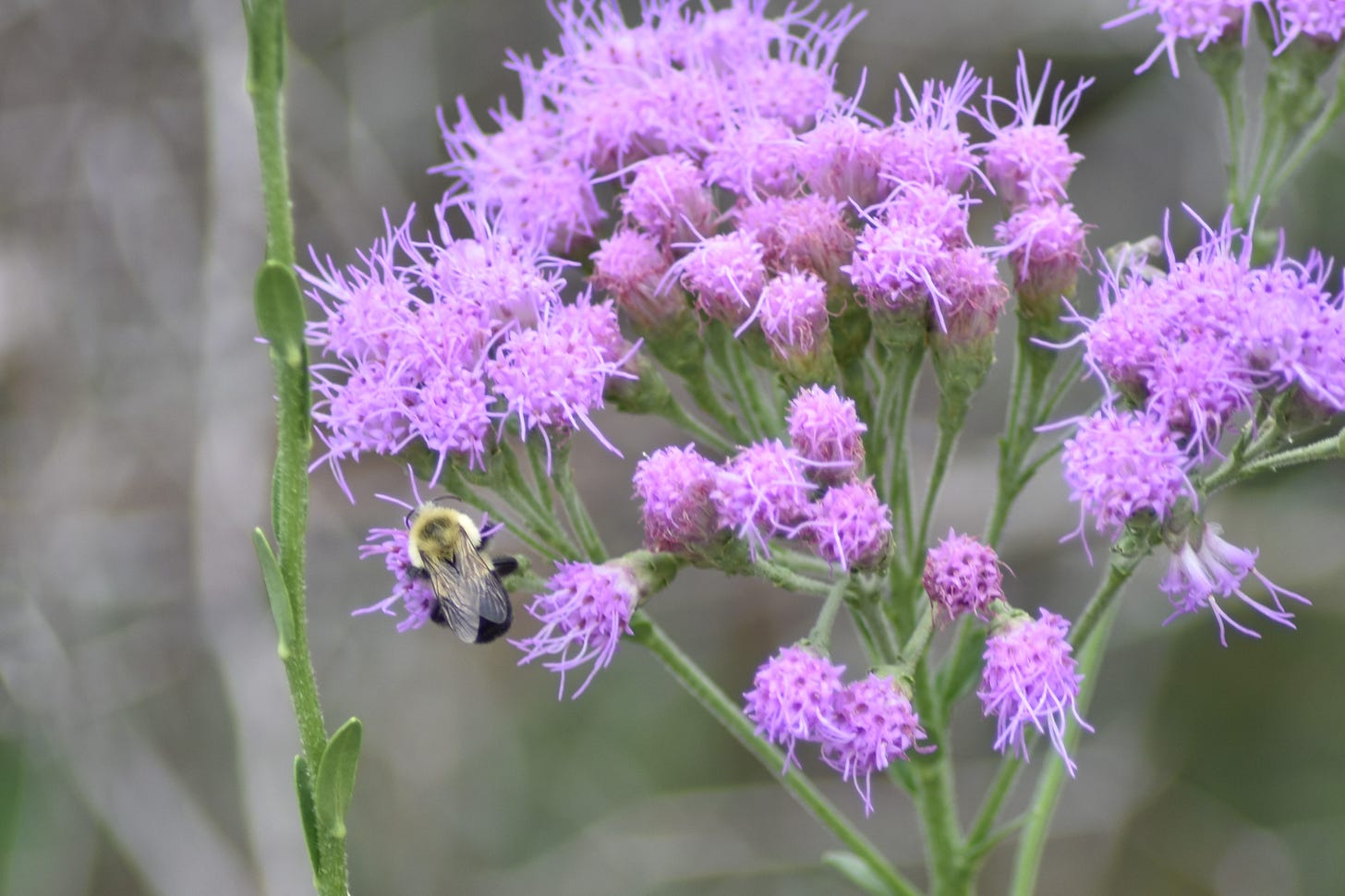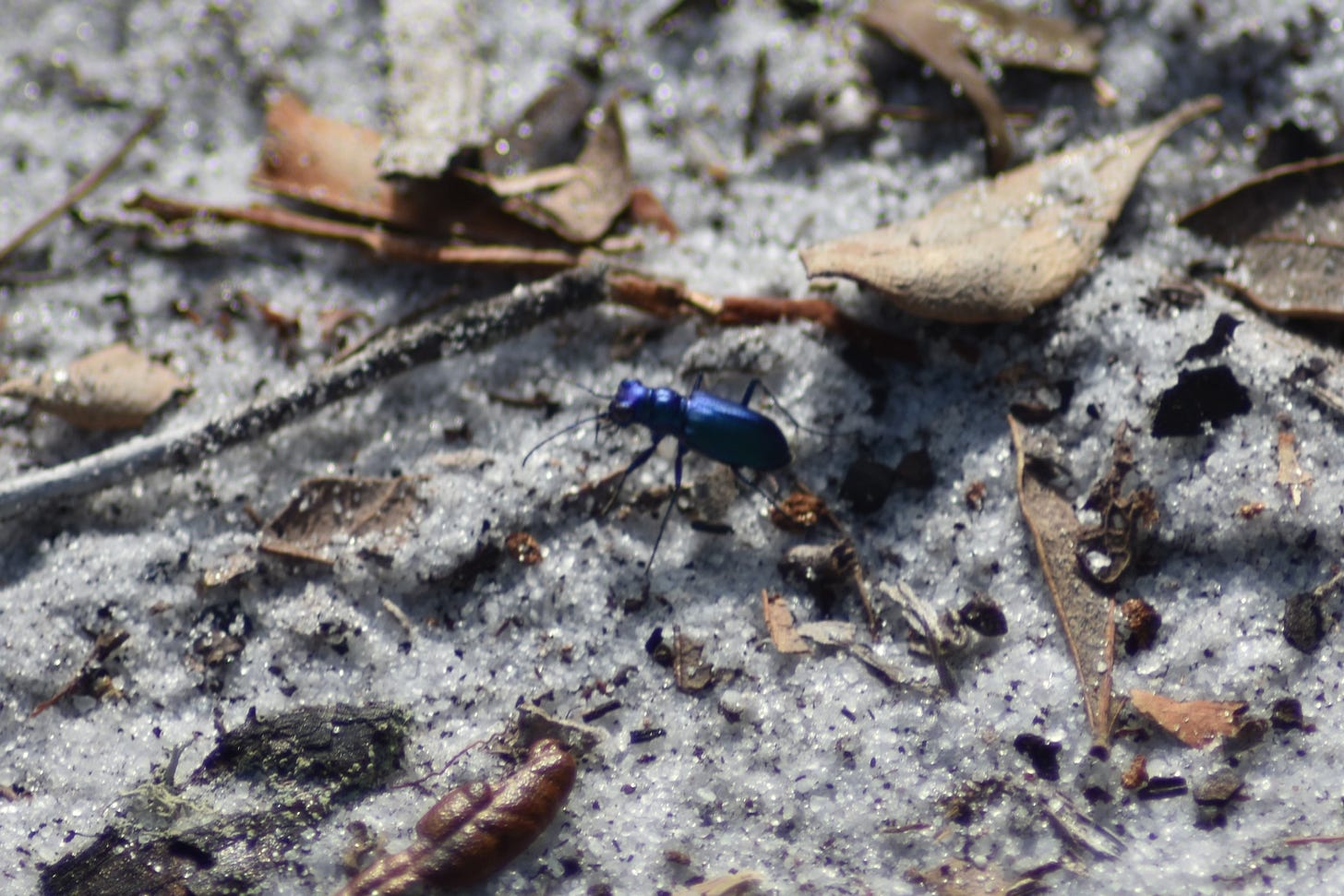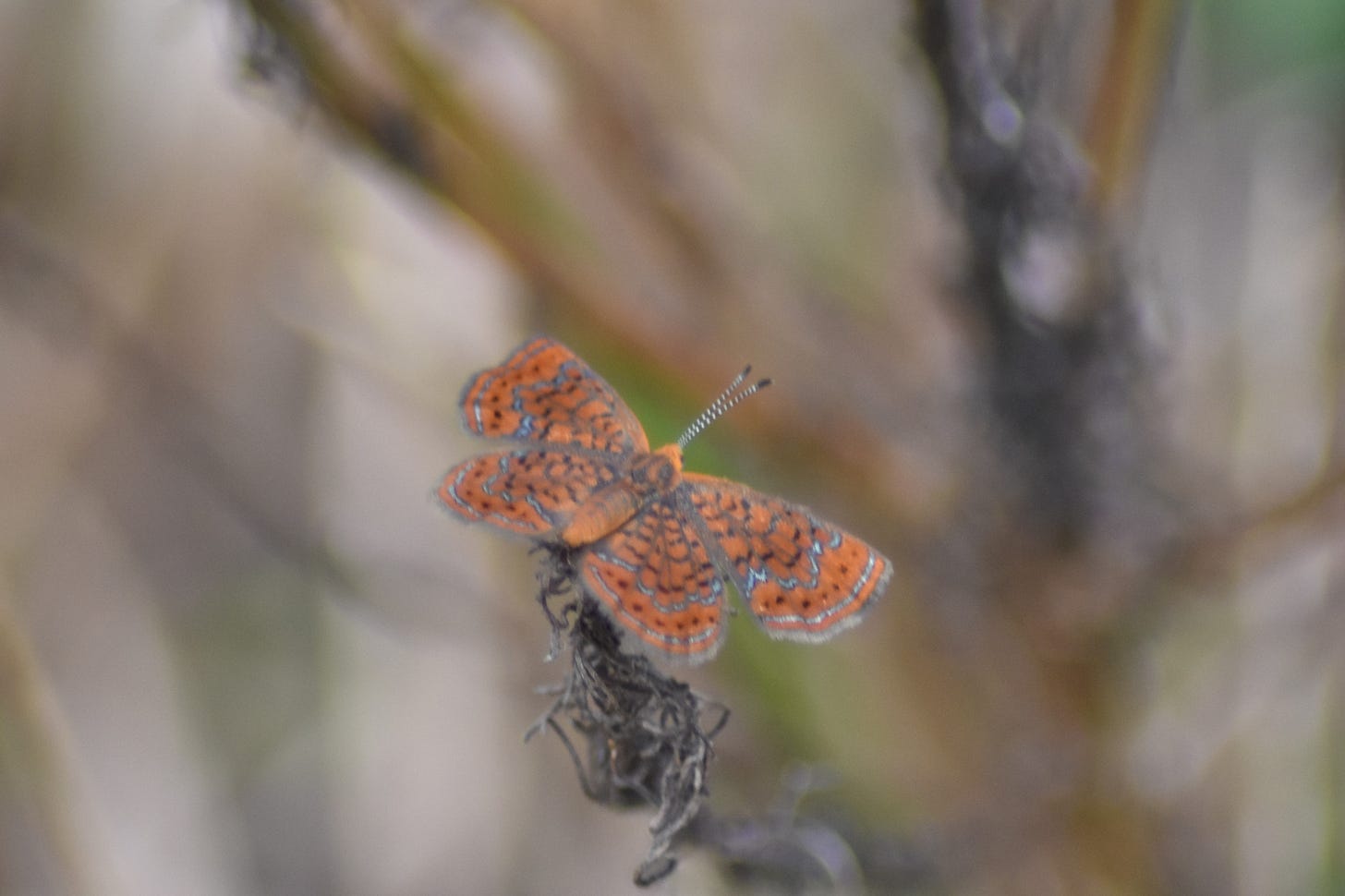Review of Chuluota Wilderness Area East Loop
Wet Flatwoods are wet
The Seminole County Chuluota Wilderness area brochure describes the East Loop as :
The east loop (yellow blazes) takes you through the mesic pond pine flatwoods, mixed hardwood swamps and along the east boundary of the property. The east loop is approximately 2.7 miles long and often floods during the wet season.

On the map the East Loop is the northern section. I entered at the northwest corner from Curryville Road, taking the Florida Trail (marked as Fire Lane) to where it intersects with the East Loop. The total trip including the 2.7 mile East Loop is about 4.5 miles.
The hike was a blend of the very wet and the very dry. The Florida Trail section habitat was sand pine scrub, a well drained sandy soil. The East Loop section was wet flatwood — with an emphasis on wet.

One of my favorite plants to see is the Florida Paintbrush. When blooming — July - November — they always seem to have a number of butterflies and bees attracted to the pink or purple flowers. Here’s a Bumblebee on a Florida Paintbrush.

Ringless Honey Mushrooms were pretty common in the dry area. I’ve heard they’re a very good mushroom to eat. But don’t trust me. Do your own identification. Carefully.

This was a very small tiger beetle, only about 1/2” long. I think he’s a festive tiger beetle. Even being relatively small there was no doubt he’s a tiger beetle. They’re almost always metallic looking with bright colors.
The walk changed to a slogging mess on the east side of the East Loop. Probably a full mile of the 2.7 mile distance was was flooded, especially on the eastern boundary. Check out the short video below to see the condition of most of the road. Once I got to the wet part of the hike the wildlife changed to animals that are common in marsh / swamp environments.

I saw several spotted orb weaver spiders. I could tell it had been several days since another hiker came by because of the large number of spiderwebs across the trail.

Here’s a crescent butterfly. I think it’s a pearl crescent. However I never found a picture of a pearl crescent that was this orange. The pearl crescent tend to be slightly burnt orange.
Below is a video of a short part of the walk. Turn up the sound so you can hear me sloshing through the marsh.
Overall it was a pretty nice walk — lots of variety in the plant and animal life as it transitioned between a very dry biome and a very wet biome. The trail is pretty well marked, however it's obvious the mower hasn’t been able to get in there much this summer. However it’s not good if you like clean shoes. Or you’re skittish about walking in calf deep blackwater.
If you liked this consider sharing with your friends.
In this blog I’ll be talking about nature, nature photography, natural places (especially in Central Florida) and whatever else catches my eye. If you like this please hit the share button. Or you can subscribe and be notified via email when I post. Thanks for coming by.
